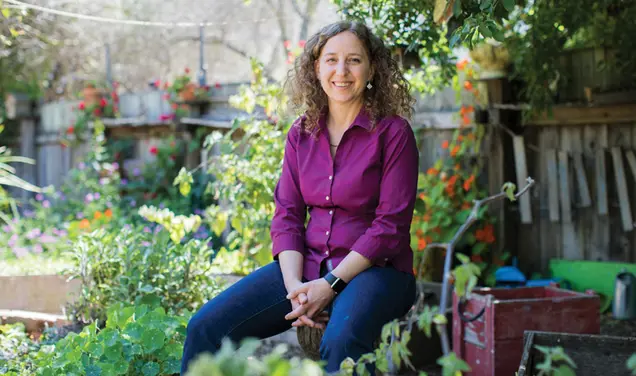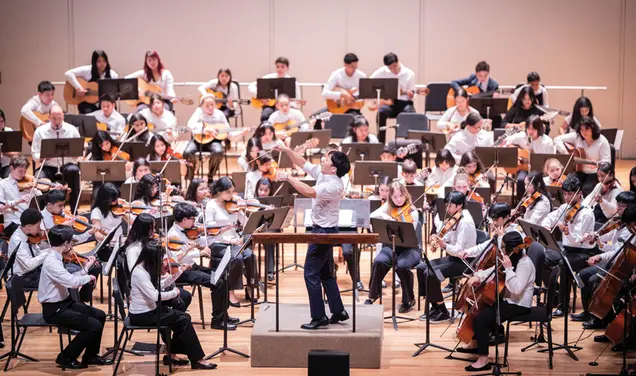Diversity, Equity and Inclusion Report: Princeton Reaches Out
University to launch pilot programs that engage nontraditional students
Princeton will pilot two new programs for local community college students in the 2023-24 academic year, building on a 2020 pledge to expand the University’s teaching.
“If you want to reach adult learners, community colleges are a really good place to go,” said Vice Provost for Academic Affairs Cole Crittenden *05.
The first pilot will bring up to 36 students from regional community colleges to Princeton this summer to spend six to eight weeks earning credit for two courses and learning more about the transfer process, according to Crittenden.
Crittenden said the students will be able to take advantage of Princeton resources, such as “financial aid officers who can give an excellent overview of the kinds of things students should be paying attention to when they’re thinking about transferring.” Staff from the Emma Bloomberg Center will lead the effort.
For the second pilot, Princeton will recruit and hire two recent Ph.D.s and place them as visiting teaching and advising fellows at a local community college partner yet to be determined, according to Crittenden. The fellows will teach an accredited Princeton course hosted at the community college, and the effort will be led by staff in the McGraw Center for Teaching and Learning.
In addition, last year the Community College Faculty Program increased benefits for community college instructors who mentor Princeton graduate students, such as the ability to take one free Princeton course per semester, and Crittenden said the Prison Teaching Initiative at the Fort Dix federal facility is “getting back on its feet” after a hiatus; the program is going strong at state facilities. He also cited the related expansion of Princeton’s transfer program, which aims to increase the number of transfer students to 100 over the coming years. More than 90 percent of Princeton’s transfers come from community colleges.
The combined efforts should put nontraditional students “on a path that strengthens their outcomes, but also the ecosystem of higher education,” according to Crittenden.
The news came in December, just after the University published its second annual diversity, equity, and inclusion (DEI) report. The 48-page document (online at inclusive.princeton.edu) details the University’s efforts across and beyond campus to become more diverse, accessible, and accountable in matters related to race and ethnicity, gender, sexual orientation, religion, citizenship status, and more.
The University’s DEI work is “guided by a set of institutional action plans,” according to the annual report, and follows President Christopher Eisgruber ’83’s September 2020 call “to find additional ways to promote racial equity for members of the Princeton community and society as a whole, and to redouble the University’s past efforts to make Princeton a more diverse, inclusive, and equitable community.”
Vice Provost for Institutional Equity and Diversity Michele Minter said that this work is not a top-down effort, but rather stems from and engages the entire community.
“We’ve tried to share ownership and to encourage people to take responsibility in their own sphere of influence or in their own operations,” said Minter, who also invited the community to share feedback by visiting racialequity.princeton.edu/your-ideas-change. “It’s everybody’s work.”
The combined efforts should put nontraditional students “on a path that strengthens their outcomes, but also the ecosystem of higher education,” according to Vice Provost Cole Crittenden *05.
According to the report’s data section, Princeton’s faculty and staff have become more racially diverse. In fall 2022, 21.4 percent of tenured and tenure-track faculty identified as Asian, Black, Hispanic/Latino/a/x, or Native American, compared to 17.4 percent in 2018. Senior staff identifying as Asian, Black, Hispanic/Latino/a/x, or Native American, rose from 19 percent in 2017-18 to 23 percent in 2021-22; nonsenior staff saw a similar 4-percentage-point increase in the same period.
Frederick Wherry *04, who became the University’s inaugural vice dean for diversity and inclusion in July, said there’s a “sense of momentum” when it comes to hiring a diverse body of faculty. “Over time you really see steady progress, … and so long as we’re moving in the right direction, it feels really good,” he said.
In January 2022, the University announced an increase in graduate student stipends by an average of about 25 percent — the largest ever one-year increase — which took effect in the fall. The University hopes this will ensure that it can continue to “attract and retain the very best students without regard to economic background.”
Graduate students were also invited to last spring’s inaugural Inclusive Academy (IA) Symposium, which was organized by the Graduate School to support all students in preparing for life after graduation. In addition, the Graduate School launched the accompanying Best of Access, Diversity, and Inclusion (BADI) Awards to honor those “who have made significant impacts in the Princeton graduate student community around diversity and inclusion.”
Other highlights from the report:
- The Effron Center for the Study of America, established in November 2021, is investing in faculty, visitors, and fellows in “emerging areas of American studies scholarship” including race and ethnicity studies.
- Native and Indigenous members of the community are enjoying a newly dedicated affinity space on campus, and the Princeton University Library started an Indigenous Studies Working Group to learn from scholars in the discipline and to curate related library resources.
- The Task Force on the Future of Alumni Affinity Programming is developing recommendations for “a set of guiding principles to inform work with alumni affinity groups.”
Eisgruber acknowledged that there is more to do in a message included in the report. “This University is — and will remain — a work in progress,” he wrote. “Commitments to diversity, inclusion, and excellence require constant vigilance and unceasing effort.”











1 Response
Elena Nikolova *11
2 Years AgoSpeaking About Diversity on Campus
I am glad that, finally, Princeton has woken up to the fact that neither its students nor employees are or should be exclusively white males. When I arrived in fall 2005 to start my Ph.D. at SPIA, I was shocked to find out that I was one of four women in the Ph.D. economics classes I was taking (which consisted of 20-plus students). Across all the classes that I took during my five and a half years at Princeton (in economics, politics, and sociology), I only had two female professors (Anne Case and Chris Paxson, who were both amazing). I had no African American professors or classmates. Neither the economics nor the politics departments offered Ph.D. courses related to gender or diversity, and I don’t remember ever discussing gender or diversity issues in other classes.
A fellow classmate in the SPIA Ph.D. program who was moving to Princeton from abroad was advised by the Ph.D. program director not to bring her six-month-old baby because she had to focus on studying, so she initially left her son to be looked after by his grandparents. Later, when she brought him to campus, she shared that her stipend was exactly the same amount as the Princeton nursery fees. I remember reading an essay by Anne-Marie Slaughter (Princeton’s SPIA dean at the time) in The Atlantic a few years ago and wondering why we never discussed any of these issues at SPIA, or at Princeton more generally.